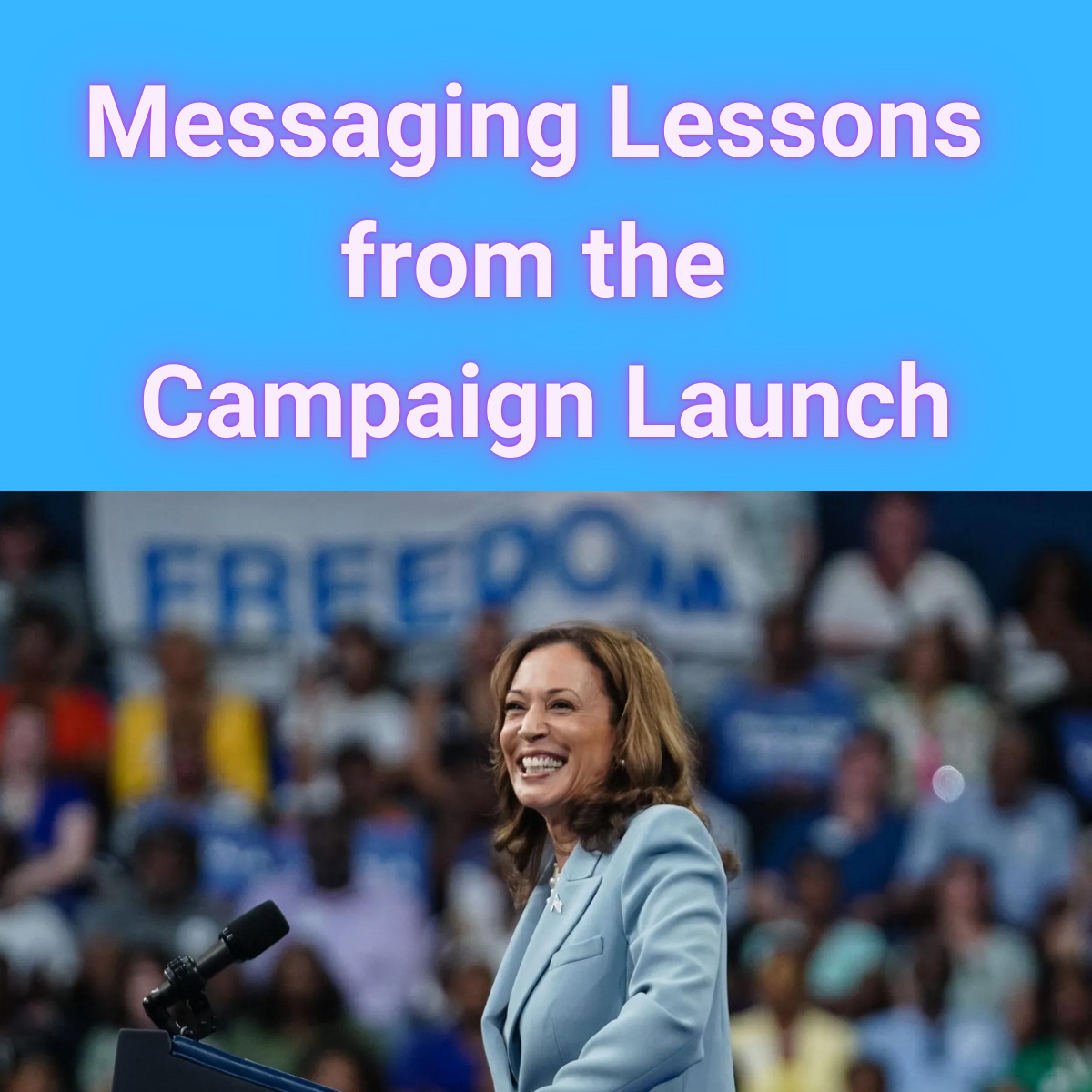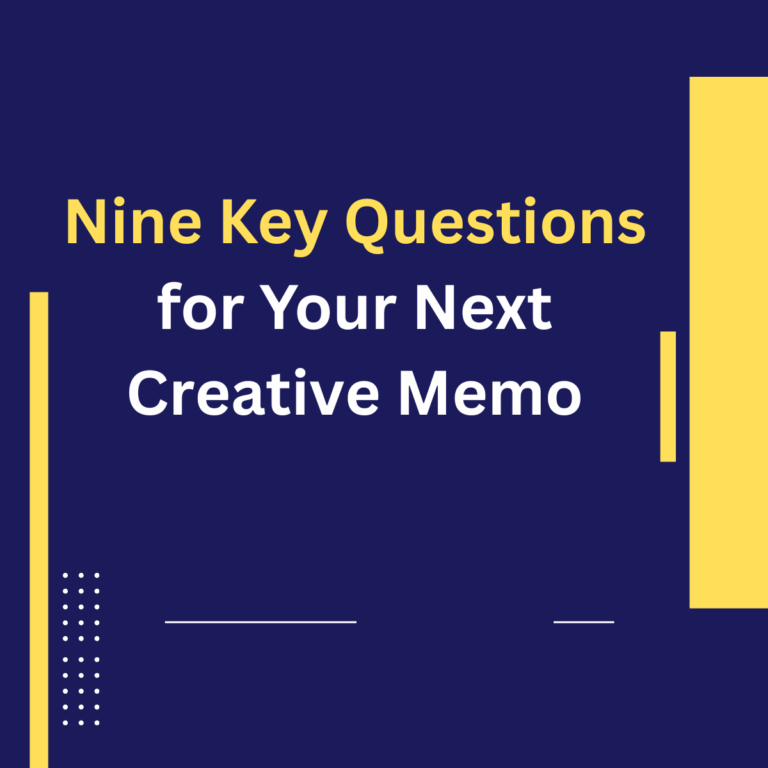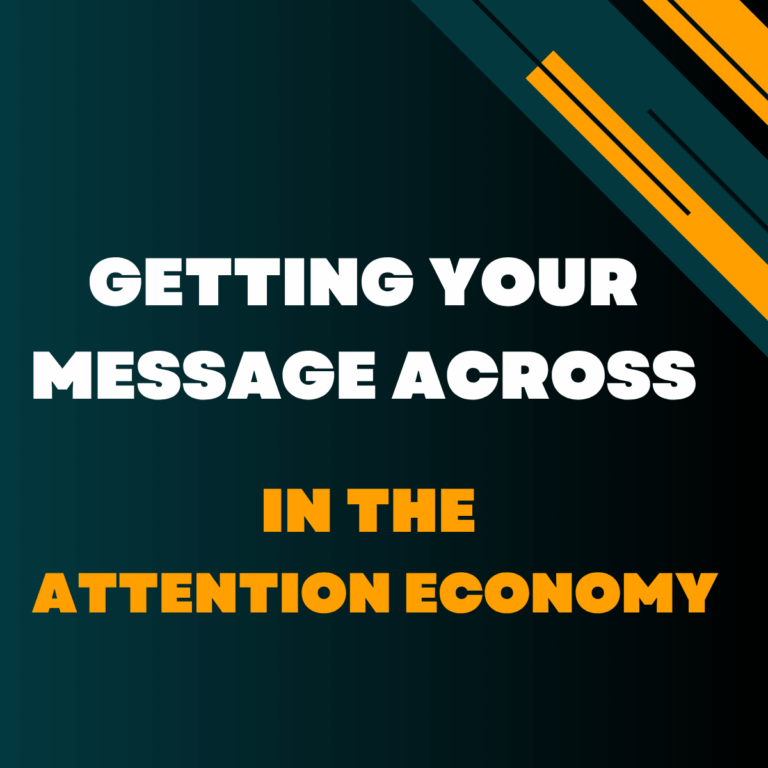And Four Key Challenges Just Ahead
The amazing opening weeks of Kamala Harris’ campaign offer important messaging lessons we all can draw from. Let’s look at four key takeaways from this launch period – and four messaging challenges the campaign must confront over the next 91 days.


Joe Biden’s decision and quick endorsement of Kamala Harris unleashed a flood of emotions. But perhaps the strongest emotion of all was surprise. Democrats and progressives had begun to despair that the standoff between a dug-in Biden and those urging him to drop out wasn’t going to end well.
Then, in a moment’s flash, everything changed. And the element of surprise played a vital role in the outburst of energy and hope that has followed. It’s a reminder that surprise is one of the most powerful – and least seldom invoked – emotions in nonprofit communications.

Kamala Harris has quickly embraced her new role with an infectious “When we fight, we win” confidence. It’s just what dispirited donors, volunteers and voters needed to see. And it’s a reminder that when our audiences are consumed by fear, anguish and hopelessness, they don’t need us to wallow in despair alongside them. They count on the groups they support and the leaders they trust for a steady hand, well-grounded confidence and a clear, hopeful sense of direction.

The prosecutor versus felon energy of “Hear me when I say, I know Donald Trump’s type.” The confident debate challenge of “Say it to my face.” The Trump critique “He doesn’t walk it like he talks it.” Kamala Harris’ speeches to date have featured language that powerfully connects with people. These aren’t just applause lines. They are reminders that messages are most impactful when expressed in direct, memorable phrases that resonate with our audiences.

In his brilliant book For the Culture, Marcus Collins argues that true cultural engagement is the most powerful vehicle for influencing peoples’ behavior. In ways unimaginable for a Biden campaign, Kamala Harris conveys a genuine, unforced fluency with popular culture and an understanding that campaigns are best understood and waged not only in narrow political terms, but also in a broader cultural context. That understanding accounts for a lot of the energy surrounding her campaign – and it points to a broadened perspective that future-facing nonprofits must embrace.


Given the extraordinary nature of Joe Biden’s decision, seeing fitful stops and starts as the campaign regrouped would have been both understandable and dangerous. But that didn’t happen. Instead, we’ve seen an energetic and seamless narrative unfold.
This week’s vice-presidential rollout and the week of August 19 convention will provide a natural structure for continuing and expanding that narrative. Then, the challenging period starts. With the novelty wearing off and not as many natural anchors (save potential debates), the Harris campaign’s ability to drive the 2024 narrative will be challenged anew.
Whether driving a presidential campaign storyline or the arc of an organizational initiative, the inability to create your own narrative anchors (when external events fail to provide them) can have devastating consequences.

Political campaigns are not just about telling your own story. They’re about winning the battle with your opponents to frame the contest in terms most favorable to your side. Especially after the disastrous debate, Donald Trump was winning that battle. He and his campaign were framing the election as a referendum on whether President Biden, at the age of 81, had the stamina and mental acuity to lead the nation for four more years.
Now, in the current moment, Kamala Harris has the upper hand on the framing front. She has begun to lay out a series of overlapping and mutually reinforcing A versus B definitions of the presidential race. The prosecutor vs. the felon. Future vs. Past. Old vs. New. Meanwhile, the Trump campaign is floundering in its effort to define the contest.
It’s safe to assume that, before long, they will right their ship and focus on advancing a more viable framing of the contest. How potent that framing is and how well the Harris campaign counters it could well decide the outcome. An important reminder: In presidential campaigns and in advocacy battles, the successful side is usually the one that both advances a persuasive framing and disarms the other side’s effort to do the same.

The narrative arc and framing issues discussed above are ultimately about persuading the voters who will decide the election. But the Harris campaign has a related, but distinct, audience challenge. That is keeping Kamala’s supporters – donors, volunteers, advocates – fully engaged for the next 13 weeks.
Currently the energy level within the growing Team Kamala community is at a fever pitch. The best way to maintain that energy is for Harris to invite her supporters to walk through her journey side by side. That means laying out a series of essential tasks that Team Kamala can take on and reporting back on what’s been accomplished. But it also means sharing the emotional ups and downs of the campaign.
Despite its fundraising success, the Biden digital fundraising efforts weren’t really inviting his grassroots supporters to share such a journey. They over-relied on a series of tactical fundraising messages. To date, the Harris campaign messages have featured far more authentic and engaging content. Let’s pray that this continues because, to succeed, the campaign needs its millions of supporters to not only fund the campaign, but to be active, engaged and motivated participants in its success.
Finding that path to both financial support and active emotional engagement is a challenge to which every nonprofit should be alert.

It’s not going to be all smooth sailing. Something is going to go wrong. It’s the nature of presidential politics. And, in our highly polarized climate, some event that poses a deep challenge to the Harris campaign’s viability is almost a certainty.
Preventing a serious threat like that from emerging may not be possible. But being prepared to deal with such a defining moment is definitely within the campaign’s grasp. That includes warning supporters in advance that “there will be good days and bad days” in the weeks ahead and reminding them that we’ve got what it takes to push through the challenges we’re certain to face.
It also means keeping your ear to the ground so that the campaign isn’t caught flat-footed.
And counting on Kamala Harris’ personal leadership to guide the campaign through the challenge. A moment of crisis poorly addressed can derail the campaign. But a crisis dealt with in a forthright and decisive manner can actually strengthen people’s faith in a leader.

How the Harris and Trump campaigns navigate the four messaging challenges I’ve outlined will go a long way toward determining the outcome of this high stakes contest. And watching them do it over the next 90 days will be a master class in messaging. Fasten your seatbelt and watch this space.









